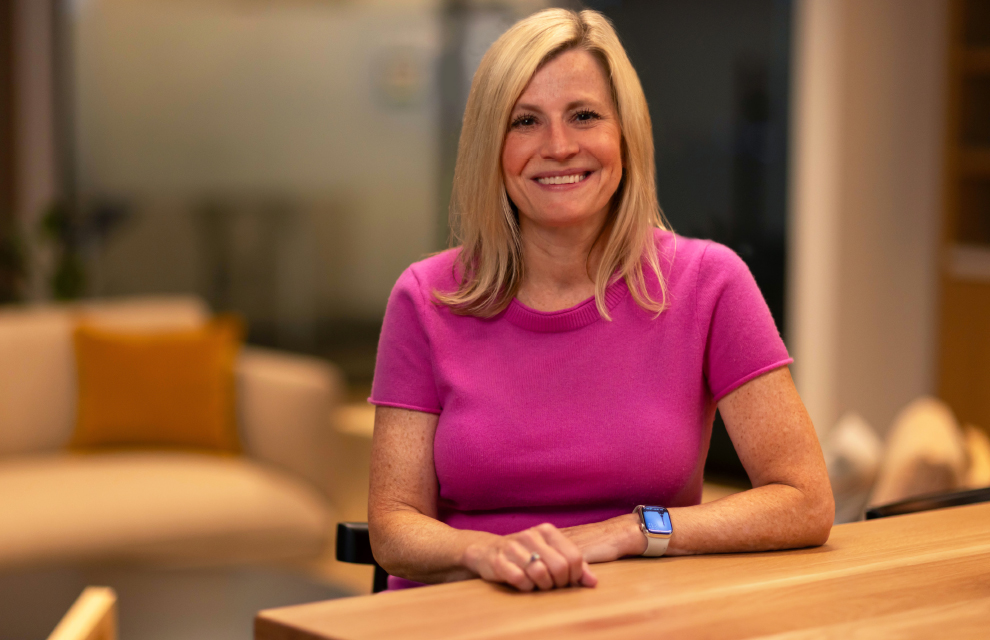In April 2024, you joined Fidelity Agency Lending (FAL), contributing to an extensive career in securities finance. Can you tell us why you joined the company's senior team?
I was attracted to the innovation and deep capital markets expertise across the organisation. The wealth of knowledge and technological advancement at Fidelity is impressive — all of which is critical to our institutional clients’ success. The atmosphere has the energy and vision of a start-up company, but there is a whole breadth of resources across the enterprise to leverage. Fidelity spends multi-billions of dollars on technology annually across the firm and has an inherent commitment to resilient tech security — a key differentiator for us.
What further impressed me was the FAL team and the investment in human capital that the firm is committing to make this programme successful. The team has vast expertise in securities lending and trading, and their talent is unparalleled. Before I joined, I heard a lot of positive buzz about Fidelity Agency Lending. Throughout the industry — fintech vendors, borrowers and beneficial owners, and industry professionals — many colleagues have expressed how impressed they are with the energy and differentiated approach of the FAL team.
Another draw was Fidelity’s deep ties with firms we collaborate with — asset managers, hedge funds and other institutional investors — and its commitment to helping our institutional clients achieve the best outcomes for their stakeholders. Many of these firms have established relationships across Fidelity because of our many products and services that help institutions in different, meaningful ways. There is a lot of great collaboration within the organisation that strengthens our client relationships while providing the best support.
Tell us about the strategic role you are leading, and key areas of focus that will enable the team to introduce new ways of thinking to benefit your institutional clients.
As we evolve, expanding our global footprint is a priority. Fidelity is a global asset manager, and as such, we can leverage other parts of the company as we look for opportunities in non-US markets. In particular, the UK, EMEA, and APAC markets make sense strategically. A key input to our strategy is constantly evaluating the lendable assets of our existing and potential clients who are in our sales pipeline to see where we can offer added value.
The most important thing we can do for our clients is to generate incremental revenue and understand their overall needs, goals, and regulatory requirements. Our strategic considerations involve all facets of the securities finance industry — revenue creation, regulatory changes, operational and capital efficiency, new routes to market, and opportunities within global markets. It is imperative for us to evaluate new lending markets and perform due diligence on new trade structures that are more capital efficient. We are always contemplating new and innovative solutions that we can provide to our clients to increase our value proposition and differentiate our programme.
There are also many things happening in the regulatory landscape, so we are actively engaged with industry groups, Fidelity’s government relations team, and our clients to ensure that we are aware of all legislative proposals and how they impact our clients, our securities lending programme, and the lending industry.
The needs of institutional clients are at the heart of decision-making and strategy for many firms. How do you ensure you are getting the right input, and what do you specifically evaluate to set strategy?
I am tightly connected with the FAL senior team that includes Justin Aldridge, head of agency lending, Doug Brown, head of business development, Marney McCabe, head of relationship management, and members of our trading, product, and technology teams. They all have valuable client input, from both existing and prospective clients, that we need to consider as we evolve.
After in-depth analysis, we tier new opportunities based on factors such as how many and which clients will benefit from the potential revenue opportunity, the costs to implement, if we have the needed resource capacity to support it, and how it complements our current infrastructure. Once the evaluation is completed, it goes into our planning and prioritisation process and then we execute from there.
We also continuously explore trading venues and securities lending platforms for cost and operational efficiencies. In our evaluation, we ask probing questions like what this helps us to solve, how much does the platform cost, does it help us transact more efficiently, will it help with our goal of providing revenue to clients, does it have resilient technology with high security standards, etc.
You founded the Women in Securities Finance group in 2018. The group now has over 1,300 members across five chapters. What is the vision for this organisation and how does it benefit the industry and the talent within the securities finance space?
I am truly proud of the work that the Women in Securities Finance leadership team has done throughout the years. The mission of the group is to create a community to foster connections and promote the inclusion and advancement of women in the securities finance industry. The mission is supported with regional networking events, programming focused on professional growth and development, and the implementation of the Grow Your Network programme that was rolled out in the London, Boston, and New York chapters.
I am truly proud of the work that the Women in Securities Finance leadership team has done throughout the years. The mission of the group is to create a community to foster connections and promote the inclusion and advancement of women in the securities finance industry.
While this programme has created connections for members within the same chapter, we are now piloting a global, cross-border version of the programme that will create connections across our Boston, London, and virtual chapters. This will provide opportunities for our members to build a global network. The group also provides a platform for women to increase their industry visibility by participating in educational podcasts and speaking at industry conferences and events sponsored by Women in Securities Finance. Finally, the group has led several philanthropic initiatives such as participating in high school and higher education panels to highlight career paths and opportunities in securities finance.
The goal is to attract, cultivate and retain talent, help women to advance at every stage of their careers, promote diversity, equity and inclusion (DE&I), and bring diverse thinking to the industry to ensure continued growth. I am very thankful for the group's allies, supporters and members over the years as that support has contributed to the success of Women in Securities Finance. All of the work done by the group has set the stage for the advancement of women that will benefit the industry. I am excited to see what the future holds. The energy from the 1,300 members is sure to keep the group moving in the right direction.
Next interview →
Tiger Brokers
Keith Lee
 Image: Jill Rathgeber
Image: Jill Rathgeber 